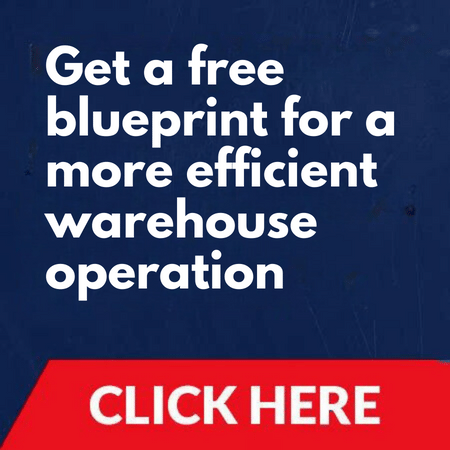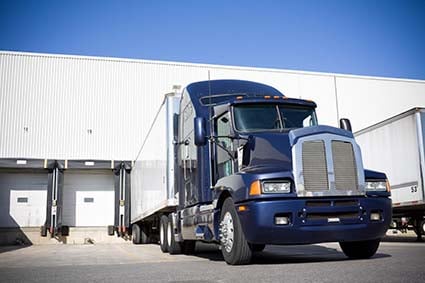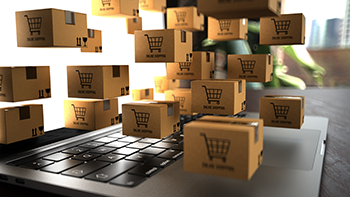Understanding Today’s Fulfillment Costs
Most businesses today are under more pressure to control fulfillment costs. With rising labor rates, tight warehouse space, and growing customer demands, leaders need better clarity on what fulfillment should cost–and how to manage it.
labor rates, tight warehouse space, and growing customer demands, leaders need better clarity on what fulfillment should cost–and how to manage it.
"Recent data gives us a clearer picture. Whether using in-house operations or a third-party logistics (3PL) provider, most companies spend between 5% and 15% of gross sales on fulfillment costs," according to Brian Barry, President of F. Curtis Barry & Company.
This excludes outbound shipping profit and cost. Efficient operations can land on the lower end, while operations with lower order values or limited automation can creep toward the top.
Here are five quick takeaways to keep in mind:- Fulfillment costs often fall between 5% to 10% on the lower end, and upwards of 15% of gross sales on the upper end.
- In-house warehousing becomes more cost-effective with good systems and order volume.
- 3PL services are flexible, and reduce the need for certain investments, but may cost more on a per order basis or as a percent of sales.
- Low average order values can make fulfillment look more expensive than it is.
- Tracking both cost per order and fulfillment costs as a percent of sales gives a better view of performance.
Understanding fulfillment costs is not about cutting corners. It’s about knowing where money goes and using that knowledge to make better decisions.
The Challenge for Mid-Sized Business
Mid-sized companies operate in a tight spot. They are past the early startup phase but not yet large enough to have full economies of scale. Many bring in tens of millions in annual sales, balancing both e-commerce and wholesale orders. They face challenges that small businesses avoid and large companies have already solved.
As order volumes grow, labor needs shift, warehouse space becomes strained, and simple processes no longer hold up. These changes make fulfillment costs harder to manage. Leaders often don’t know their true fulfillment costs, and struggle to properly track the data. It is also difficult, or impossible, to understand how their numbers compare to others in the industry.
That’s why operational benchmarking is so important. Without it, it’s hard to know if you’re overpaying or on track. Comparing your own warehousing costs to what similar businesses pay can highlight gaps, help you plan better, and keep costs in line as you grow.
The Case for In-House Fulfillment to Control Fulfillment Costs
Handling fulfillment in-house gives companies more control over their operations. It also allows better visibility into where money is being spent.
The main cost areas include:
• Labor: warehouse workers, supervisors, and support staff
• Space: rent, utilities, maintenance, and taxes
• Materials: boxes, labels, tape, and other packing supplies
• Equipment: shelving, carts, scanners, and related tools
When mid-sized businesses run efficient operations, they can keep fulfillment costs close to 5% to 8% of gross sales. These companies often have strong systems, solid order volume, and trained teams. On the other hand, those with less automation or lower order counts may see costs rise to 10% or even 15%.
In-house fulfillment can be the better choice when a company has enough scale to spread out fixed costs. It also allows room to improve over time through better layout, stronger team management, and smarter space use.
This also means that companies must make solid investments in all areas from leadership to warehouse management systems, use of barcode technologies and beginning to consider appropriate levels of automation.
The Case for 3PL Fulfillment
Outsourcing to a third-party logistics (3PL) provider shifts the burden of labor, space, systems, automation and materials to an outside partner. Instead of running a warehouse, businesses pay for services like storage, picking, packing, value added services and basic administration.
It is not uncommon for companies using 3PLs to spend between 10% and 15% of gross sales on fulfillment. This percentage includes all warehouse-related activity, but not outbound shipping. Some companies, especially those with low order volumes or complex items, may pay closer to 20%.
The main benefit of a 3PL is flexibility. You can scale up or down without adding staff or space. But that flexibility comes at a cost. A 3PL must cover its own overhead and add a margin, which can raise your effective cost per order.
A 3PL also puts the burden of labor seasonality on the third party. This can be significant challenge for many businesses that are highly cyclical. Also consider not having to invest or integrate a warehouse management system by using a 3PL.
Being in a shared warehouse environment allows you to also leverage automation and technology that you couldn’t otherwise afford.
Comparing Fulfillment Costs Between Fulfillment Models
Understanding your fulfillment costs means using the right measures. Two common ones are cost per order and fulfillment costs as a percent of sales. Both matter, but each tells a different part of the story.
Cost per order is simple. It shows how much you spend to process one order. This is useful for tracking warehouse performance, especially over time. But it doesn’t account for the value of what you're shipping.
Fulfillment Costs as a Percent of Sales puts cost in context. It shows how much of your revenue goes toward fulfillment. This helps when comparing across time periods or against other businesses.
Fixed costs and variable fees also affect the math. In-house operations and 3PLs often carry fixed costs that get spread across all orders. It’s the variable part of a 3PL model that may end up costing more overall. But with the 3PL you should be gaining fulfilment leadership that you wouldn’t necessarily be able to afford in-house.
Low order values can distort these numbers. If your average order is small, even a modest cost per order becomes a large share of sales. That’s why companies should monitor both measures and understand how each one changes with volume and efficiency.
What the Numbers Tell You – and What They Don’t
Fulfillment numbers can guide smart decisions, but they don’t tell the full story on their own. Industry averages help set overall benchmarks, but every business has its own mix of products, order sizes, and warehouse processes. Without knowing how these averages are built, or what costs they include, companies can make bad decisions on what to do.
Understanding your true cost-to-serve is key. This means looking beyond high-level percentages and digging into the parts of your operation that affect cost. Labor hours per order, space use, and inventory turns all play a role.
Measuring yourself over time, and comparing the results, is often more valuable than trying to compare yourself to an industry average that is made up of companies from different verticals, product mixes and even different levels of complexity and sophistication.
Recent industry data shows that while wages and rent have gone up, many companies have held their fulfillment cost steady. They’ve done this by improving warehouse productivity–better layouts, stronger training, and smarter scheduling.
Numbers matter, but context matters more. What works for one company may not work for another. Use the data as a guide, but always look at your own trends and operations before making changes.
Growing Pains and the Danger Zone with Fulfillment Costs
Growth is good, but it often brings higher fulfillment costs. As order volume rises, many mid-sized businesses see their cost ratios spike. This usually happens before new systems, staff, or space are fully in place.
When fulfillment costs creep above 15% of gross sales, it’s a sign that something needs attention. Maybe the warehouse is too small. Maybe labor is stretched. Or maybe order volume is growing faster than your ability to process it efficiently.
Read more about controlling fulfillment costs with these other resources:
- Breaking Down Fulfillment Costs: What's Affecting Your Cost per Order
- 24 Reasons Not to Compare Your Metrics to Industry Benchmarks
- 15 Ideas for Optimizing Warehouse Layouts and Processes
Growing pains are normal, but they should not become the new normal. Keep a close eye on your fulfillment numbers during high-growth periods to spot problems early.
Why This All Matters
Fulfillment spending directly affects your profit. When costs get out of hand, margins shrink, and growth slows. That’s why knowing your numbers and tracking trends should be a regular part of business reviews.
Poor visibility is a common issue. Many businesses don’t know exactly how much they’re spending on warehouse labor, materials, or space. Without clear data, it’s hard to spot waste or set goals for improving the operations.
If you are managing the operations, you should review fulfillment costs as part of your monthly financials. Look for shifts in total cost per order, increases in warehousing costs, or rising costs as a percent of sales. These are early signs that something is off.
Fulfillment is not just an operations concern. It’s a financial lever. When managed well, it creates room for reinvestment and better service. When left unchecked, it eats into growth and adds risk. With costs rising and executives demanding more from operations, you don’t want to be caught without a planning for turning the operations around.
Getting a Handle on Fulfillment Spending
Controlling fulfillment costs starts with measurement. You need clean, regular data on labor hours and payroll, packing material use, order volume and order profiles, and warehouse space and costs. Without this, improvement is guesswork.
Most companies lose money in a few common areas: poor warehouse layout, slow picking processes, and lack of proper systems or technology. Even small issues, like using the wrong size box or walking too far between picks, add up quickly. Having strong warehouse fundamentals is critical to your success.
To improve, start with simple changes. Measure how many orders each worker handles per hour. Review how much you spend on supplies per order. Check if your storage racks are full or if you’re paying for empty space.
Sometimes, the model itself needs a review. If your 3PL fees are rising faster than your revenue, or if your in-house team is missing ship times, it may be time to reassess your approach.
Good data leads to better decisions. And better decisions help reduce supply chain costs without hurting service.
A Measured Next Step with Your Fulfillment Costs
Managing fulfillment costs is possible, even in a tough market. It takes regular review, the right metrics, and clear steps to improve. The key is starting with what you can see–and then acting on it.
If your costs feel too high or unclear, now is the time to get help. A warehouse optimization and fulfillment operations assessment can show where you stand and what to fix. It gives your team a plan backed by real benchmarks.
Since 1984, F. Curtis Barry & Company has helped businesses improve fulfillment, warehousing, and distribution. We work with retailers, manufacturers, and ecommerce companies to solve their distribution and supply chain challenges.
If you're ready to cut waste, improve processes, and track the right numbers, we’re here to help. Reach out to schedule a conversation or learn more about how we can support your goals.







SHARE